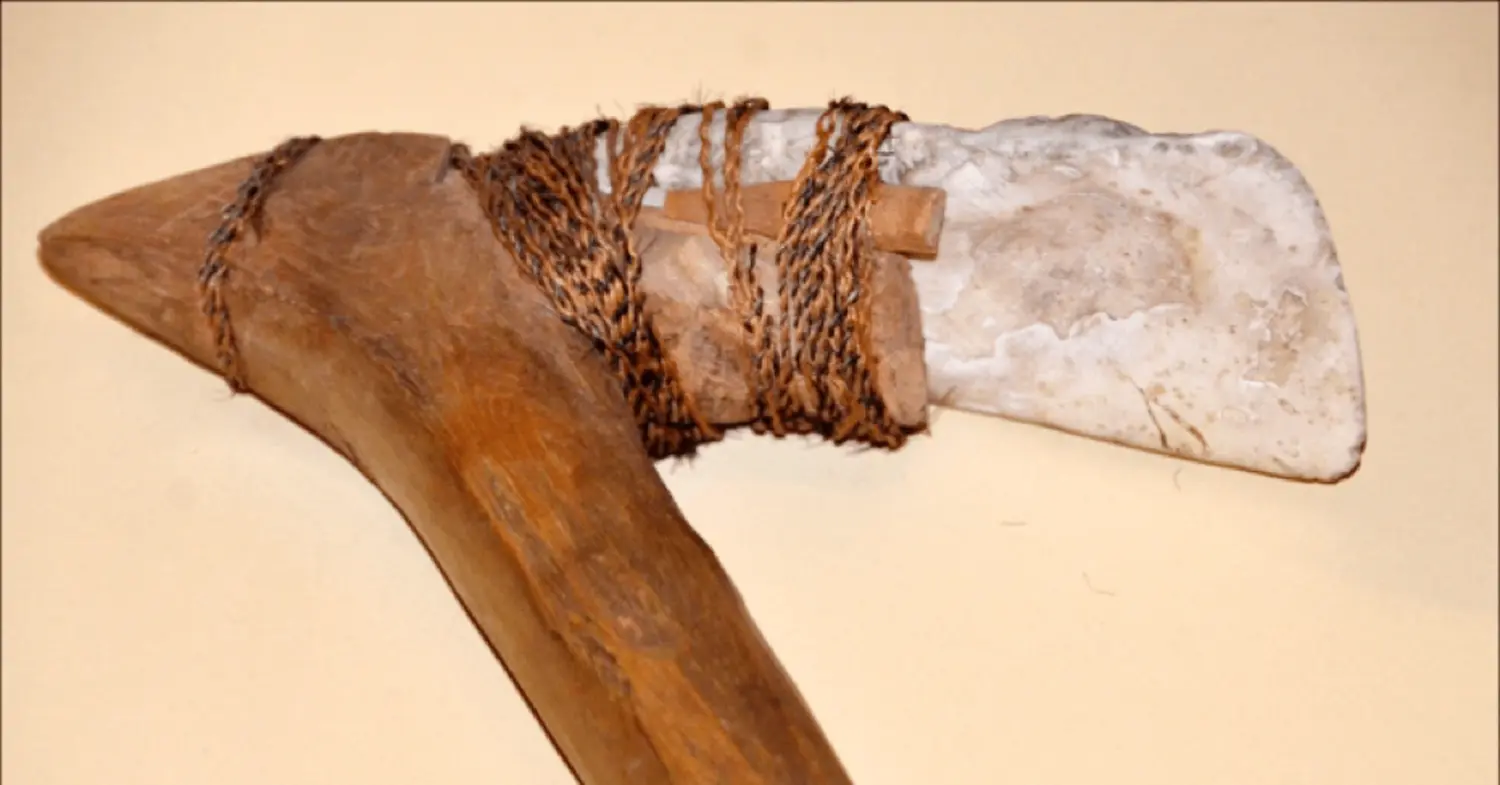From Stone tools to Treasure Island
 By Alexander Rheeney
•
23 September 2023, 4:00PM
By Alexander Rheeney
•
23 September 2023, 4:00PM
In his quest to learn more about the stone tools of Samoa, Galumalemana Steve Percival has travelled from Sweden to Scotland, visiting the National Museum in Edinburgh, Scotland earlier in the week.
He was also able to visit a new exhibition titled “Rising Tide: Art and Environment in Oceania.” This interesting exhibit considers our relationship to the natural environment through contemporary responses to climate change and plastic waste by Indigenous Australian and Pacific Islander artists.
Visitors delve into the most important and pressing issue of our time, humanity’s damaging relationship with planet Earth, an urgent issue felt especially deeply in Australia and the Pacific Islands where sea levels are rising due to climate change and the oceans are filling with plastic. Both issues are all too familiar to Galumalemana who has produced documentary films on both topics.
Accompanied by Dr. Tony Crook and Professor Emma Sutton of the University of St. Andrews, they also took time to visit a permanent display associated with Robert Louis Stevenson who is known in Samoa as Tusitala – the Teller of Tales. Stevenson was born in Edinburgh in 1850 and arrived in Samoa in December 1889, passing away on the island in December 1894.
Dr. Crook is the Director of the Centre for Pacific Studies at the University of St. Andrews, a unique institution in the United Kingdom internationally recognized for the leading role it has played in research throughout Oceania, including in Samoa. It was through his commendation that the Honorary Degree of Doctor of Letters was conferred upon His Highness Afioga Tui Atua Tupua Tamasese Ta’isi Efi at the University of St Andrews on 25 June 2019. 
Dr. Crook and Afioga Tui Atua are in an ongoing conversation about how to best go about establishing a learning centre and conservation area around the ancient stone monument in Savaii known as Pulemelei. Earlier in the year, Galumalemana and Dr. Crook, along with Dr. Chris Kavelin and Ms. Lisa Michelle Silvers of Australia, accompanied Afioga Tui Atua and Masiofo Filifilia to Rome and Haifa to discuss this matter.
More recently, Professor Sutton has been working with renowned Samoan writer Sia Figiel in connection with her play “O Tusitala – Tellers of Tales,” and was able to attend the premiere of the play in Samoa at the Galumoana Theatre. The one-person play offers a fascinating glimpse into the arrival and final years of Robert Louis Stevenson’s life in 1890s Samoa, through the voices of members of his family and the indigenous workers in his household. Sia Figiel presented her one-person play at the Royal Lyceum Theatre in Edinburgh at this year’s Fringe Festival.
“It is at the RLS exhibit in the Edinburgh Museum where you will see an adze with a blade of shell lashed to a wooden haft,” explains the visiting stone tool maker. The piece is shown to be a gift from Miss Balfour, the writer’s mother.
The group was joined in Edinburgh by Dr. Maureen Sier, Director of Interfaith Scotland. Here is yet another connection between countries that could not be further apart. Dr. Sier’s PhD explored women and religion in Samoa and she is planning to return to Samoa next year, as 2024 will be the 20th anniversary of her published thesis which she hopes to share with the community in Samoa.
“There were many other stone adzes on display at the museum in Edinburgh but they all originate from other countries of Oceania, including New Zealand and Australia,” he added. “When I started this journey, I hoped it would provide insights into the stone tools of Samoa, even if only in terms of size and shape, but now I have a new question: for what purpose was a shell adze made?
Transiting in London, he earlier visited the British Museum in London where there is known to be a large number of artefacts from Samoa. He had tried, unsuccessfully, to arrange to see Samoan stone adzes and combs, and was disappointed to see only one Samoan fan on display.
Stevenson’s “Treasure Island” was first published in 1882, seven years before he lived in Samoa. To Percival, it is the stone tools and the associated knowledge of making and using them that make Samoa a treasure island. They are, in his view, like precious stones of inestimable value.
 By Alexander Rheeney
•
23 September 2023, 4:00PM
By Alexander Rheeney
•
23 September 2023, 4:00PM











